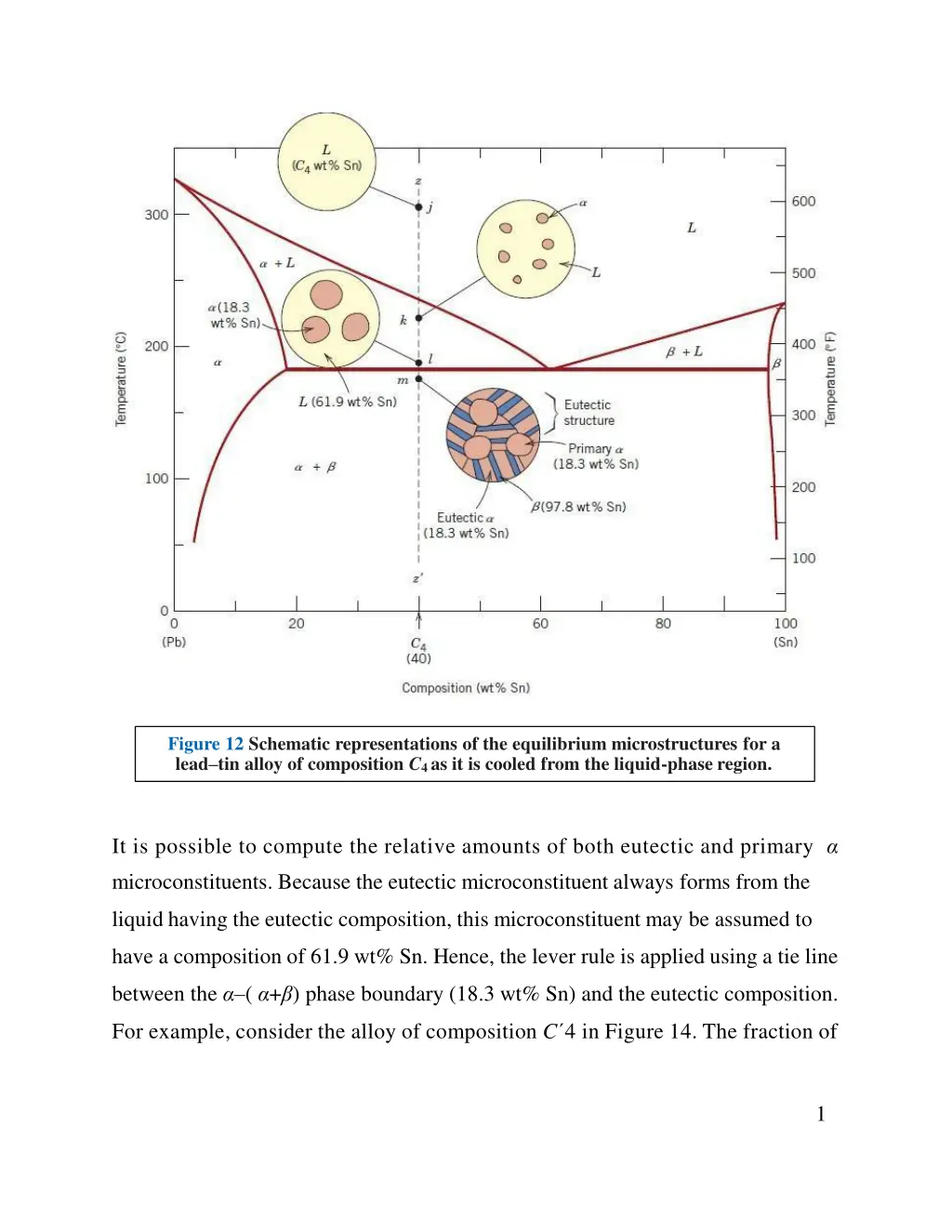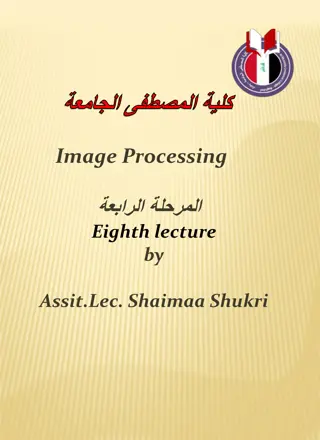
Understanding Alloy Microstructures: Equilibrium and Nonequilibrium Solidification
Explore the equilibrium and nonequilibrium solidification of lead-tin alloys through schematic representations, composition conversions, and concept checks. Learn about the consequences of passing through different phase regions and how to compute relative amounts of microconstituents.
Download Presentation

Please find below an Image/Link to download the presentation.
The content on the website is provided AS IS for your information and personal use only. It may not be sold, licensed, or shared on other websites without obtaining consent from the author. If you encounter any issues during the download, it is possible that the publisher has removed the file from their server.
You are allowed to download the files provided on this website for personal or commercial use, subject to the condition that they are used lawfully. All files are the property of their respective owners.
The content on the website is provided AS IS for your information and personal use only. It may not be sold, licensed, or shared on other websites without obtaining consent from the author.
E N D
Presentation Transcript
Figure 12 Schematic representations of the equilibrium microstructures for a lead tin alloy of composition C4 as it is cooled from the liquid-phase region. It is possible to compute the relative amounts of both eutectic and primary microconstituents. Because the eutectic microconstituent always forms from the liquid having the eutectic composition, this microconstituent may be assumed to have a composition of 61.9 wt% Sn. Hence, the lever rule is applied using a tie line between the ( + ) phase boundary (18.3 wt% Sn) and the eutectic composition. For example, consider the alloy of composition C 4 in Figure 14. The fraction of 1
the eutectic microconstituent We is just the same as the fraction of liquid WL from which it transforms, or Furthermore, the fraction of primary , W , is just the fraction of the phase that existed prior to the eutectic transformation or, from Figure 14, The fractions of total , W (both eutectic and primary), and also of total , W , are determined by use of the lever rule and a tie line that extends entirely across the + phase field. Again, for an alloy having composition C 4, Analogous transformations and microstructures result for alloys having compositions to the right of the eutectic (i.e., between 61.9 and 97.8 wt% Sn). However, below the eutectic temperature, the microstructure will consist of the eutectic and primary microconstituents because, upon cooling from the liquid, we pass through the +liquid phase field. 2
Nonequilibrium Solidification: For the fourth case represented in Figure 12, when conditions of equilibrium are not maintained while passing through the (or ) + liquid phase region, the following consequences will be realized for the microstructure upon crossing the eutectic isotherm: (1) grains of the primary microconstituent will be cored, that is, have a nonuniform distribution of solute across the grains, and (2) the fraction of the eutectic microconstituent formed will be greater than for the equilibrium situation. 3
Composition Conversions Sometimes it is necessary to convert from one composition scheme to another for example, from weight percent to atom percent. We will now present equations for making these conversions in terms of the two elements (1) and (2). Considering and , and atomic weight percents denoted by C1 and C2, atom percents by weights as A1 and A2), we express these conversion expressions as follows: 4
Concept Check: At 700C, what is the maximum solubility (a) of Cu in Ag? (b) Of Ag in Cu? Concept Check: The following is a portion of the H2O NaCl phase diagram: (a) Using this diagram, briefly explain how spreading salt on ice that is at a temperature below 0 C can cause the ice to melt. (b) At what temperature is salt no longer useful in causing ice to melt? 5



![Lec [2] Health promotion](/thumb/274962/lec-2-health-promotion-powerpoint-ppt-presentation.jpg)
